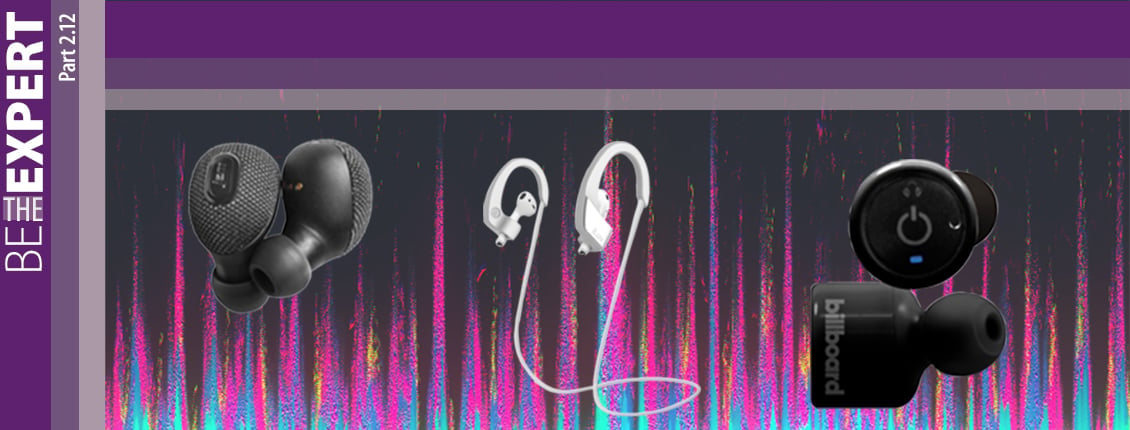
No Strings Attached!
Don’t confuse wireless with wire-free. Wireless headphones and earbuds, like similarly named security cameras, still have a wire tether. In the case of security cameras, it’s the power cord that plugs into an AC outlet. With headphones, it’s the cabling in the headband or neckband that feeds and syncs the two earpieces.
Wire-free earbuds are truly that. They have two separate, battery-powered earpieces. How they sync and communicate with each other can vary by brand.
And fully wireless earbuds aren’t just for streaming music and answering calls. Their features—both present and future—cover a wide array of applications. Some aren’t designed to work with smartphones at all. Others augment environmental sounds or change the mix ratio of music to background noise.
According to the NPD Group, more than 900,000 totally wireless headphones were sold in the US since the start of 2017. 85% were Apple AirPods.
The Brave New World of Hearables
True wireless earbuds are one of the latest developments in the growing hearables market. Although most think of hearables as something worn on the ear, many researchers now include virtual-personal-assistant devices like Siri, Alexa and Cortana that respond to the spoken word. They are labeling this segment the Internet of Voice.
2016: The Watershed Year
It hit the tech community like a bolt of lightning—Apple removed the headphone jack on its iPhone 7! While other companies had been working on wire-free for several years—mainly through crowdfunding—Apple’s 2016 unveiling of their wire-free AirPods brought the idea mainstream.
This revelation seems to have spurred an even greater flurry of out-of-the-box thinking, new start-ups and new products. Here’s just a partial list of existing and future features in the works for wire-free earbuds.
- Noise cancellation
- Active protection
- Voice-to-background ratio improvements: selective environmental listening options/augmented hearing
- Control locations: on-ear, app, voice or head movement
- Athletic performance monitoring/biometrics
- On-board memory to store music files
- Activating virtual personal assistants on smart devices
- Artificial intelligence assistants
- Language translation
- Custom-fit options
- App usage
- Extending use time before recharging is necessary
Challenges in Development
Today’s wire-free earbuds are surprising large, especially when compared with hearing aids—the other hearable with two separate, battery-powered earpieces. One reason may be that many developers forged their own path rather than partner with the hearing aid industry, masters of miniaturization and holders of a number of key patents.Wire-free earbuds use a larger, rechargeable battery—yet their battery time is judged in mere hours, not days. A carrying case that doubles as an on-the-go charger helps extend play time, but more progress is needed.
- Developers must also figure out how to sync the two earpieces together so the sound arrives at each ear simultaneously, as well as avoid a noticeable time lag when paired to a streaming source.
- They have to make sure the buds stay firmly in the ears, even during strenuous activities.
- Developing an app component that extends versatility.
The Takeaway
- Wire-free earbuds are a part of a larger revolution overtaking the world of hearables.
- If your customers like the newest tech to connect to their personal devices, it’s time for you to stock wire-free earbuds.
- Petra offers a number of wire-free headphones and you can expect more product offerings in the future.
For a more detailed look at the world of hearables, WiFore Wireless Consulting’s Market for Hearable Devices 2016–2020 is an excellent, free resource.
